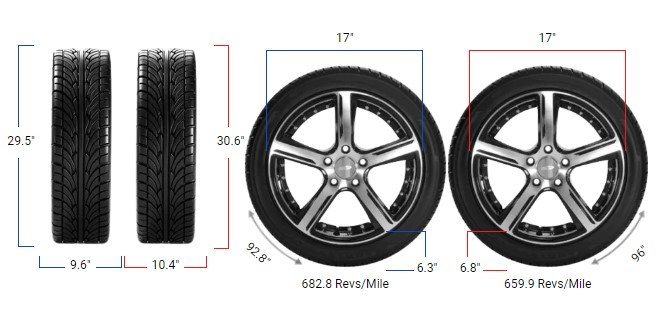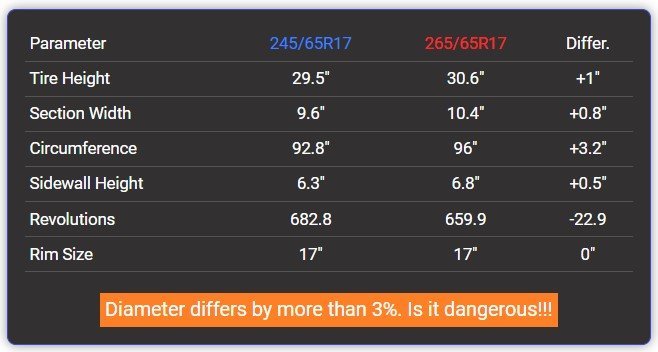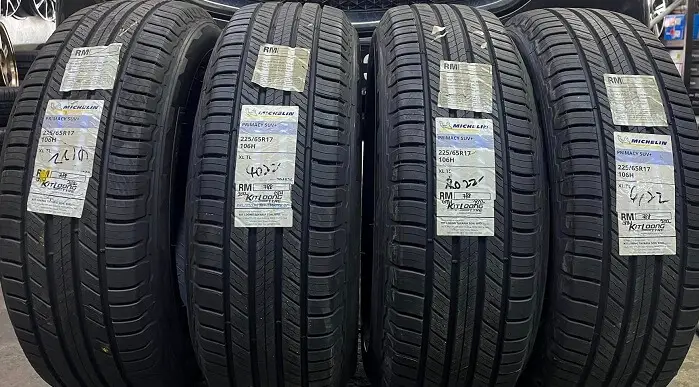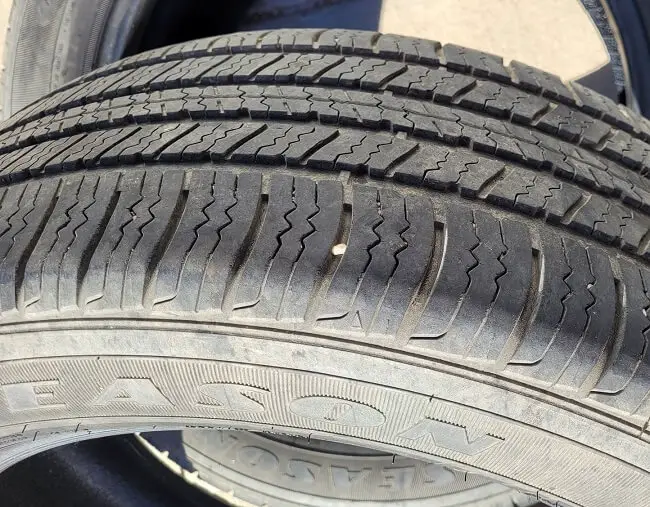Tire Size 225/65r17 vs 225/55r17
 Thinking about downsizing your 225/65r17 tires to 225/55r17? Before making the switch, it’s crucial to understand the key differences and potential impacts. Let’s dive in and explore what you need to know.
Thinking about downsizing your 225/65r17 tires to 225/55r17? Before making the switch, it’s crucial to understand the key differences and potential impacts. Let’s dive in and explore what you need to know.
- Exceeds recommended 3% diameter change, may require vehicle modifications
- Reduced ride comfort due to shorter sidewall and less cushioning
- Improved handling and cornering stability from lower profile design
- Slightly reduced fuel efficiency due to increased revolutions per mile
225/65r17 vs 225/55r17

Fitment Guide
The 6.2% difference in tire diameter between 225/65r17 and 225/55r17 exceeds the recommended 3% range. Switching to 225/55r17 tires may necessitate adaptations to prevent rubbing or clearance issues.
Consult with a tire professional to determine the feasibility and any required modifications for your specific vehicle.
On-Road Impact
Switching to a smaller tire size can affect on-road performance in several ways. Let’s explore the potential changes you might experience:
- Speedometer Accuracy: The 6.2% reduction in tire diameter will cause your speedometer to read about 6.6% faster than your actual speed. At a speedo reading of 60 mph, your true speed would be around 56 mph. Recalibrating your speedometer or using a GPS-based speed app can help mitigate this issue.
- Ride Comfort: The shorter sidewall of 225/55r17 tires provides less cushioning, potentially leading to a firmer, less compliant ride. You may feel more road imperfections and vibrations, especially on rough surfaces.
- Handling: Lower profile tires generally offer improved responsiveness and cornering stability due to reduced sidewall flex. However, the trade-off is a harsher ride and increased vulnerability to wheel damage from potholes and curbs.
- Fuel Efficiency: The 6.6% increase in revolutions per mile (from 707.26 to 754.11) with 225/55r17 tires may slightly reduce fuel efficiency compared to the original 225/65r17 size. However, the difference is likely to be minor in real-world driving conditions.

Off-Road Impact
If you venture off the beaten path, switching to 225/55r17 tires can have some notable effects:
- Ground Clearance: The 1.77 inch (45 mm) reduction in tire diameter lowers your vehicle’s overall ground clearance. This can increase the risk of undercarriage damage when navigating rough terrain, obstacles, or deep ruts.
- Traction: The narrower sidewall of 225/55r17 tires provides less flex and conformity to uneven surfaces, potentially reducing off-road traction. In muddy, snowy, or sandy conditions, the tires may struggle to find grip compared to the taller, more compliant 225/65r17 size.
- Durability: Lower profile tires are more susceptible to sidewall punctures and damage from sharp rocks, roots, and other off-road hazards. The reduced air volume also leaves less room for running lower tire pressures to improve traction and ride comfort on rough terrain.

What is the Main Difference Between 225/65r17 and 225/55r17?
The main difference between 225/65r17 and 225/55r17 tires is the 1.77 inch (45 mm) reduction in overall diameter, which represents a substantial 6.2% decrease. This change affects many aspects of vehicle performance and handling.
Can I Use 225/55r17 Instead of 225/65r17?
Switching from 225/65r17 to 225/55r17 tires is not recommended without consulting a tire professional. The 6.2% diameter difference exceeds the 3% guideline and may require vehicle modifications to prevent rubbing or clearance issues.
How Much Taller Is a 225/65r17 Tire Than a 225/55r17?
A 225/65r17 tire is 1.77 inches (45 mm) taller than a 225/55r17 tire. This represents a 6.2% difference in overall diameter, with the 225/65r17 having a diameter of 28.52 inches compared to 26.74 inches for the 225/55r17.
Our Observations
Switching to 225/55r17 tires will significantly alter your vehicle’s performance and handling characteristics. The 6.2% reduction in tire diameter is substantial and exceeds the recommended 3% range.
On-road, you’ll likely experience reduced ride comfort, improved responsiveness, and minor changes in fuel efficiency.
However, the speedometer will read faster than your actual speed, requiring recalibration. Off-road, the lower profile tires will reduce ground clearance, traction, and durability, making them less suitable for challenging terrain.
Ultimately, the decision to switch tire sizes depends on your specific needs, driving style, and vehicle setup. We recommend consulting with a tire professional to determine the best course of action for your situation.

Meet Caitlin McCormack, a Tire Size Expert and Blogger Passionate About Everything Related to Tires. With Years of Experience in the Tire Industry, Caitlin Has Become an Expert in Tire Sizes and Their Impact on Vehicle Performance.
